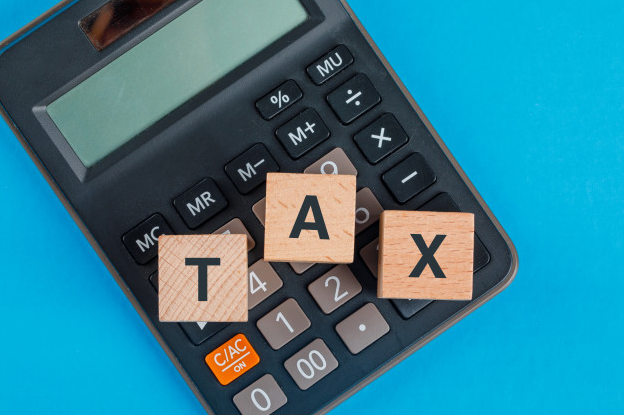
Well, we’re almost at April 15th again. “Tax Day” has been an unavoidable
“holiday” on the American calendar since 1861, when the Revenue Act of
1861 instituted federal income tax to help fund the Civil War. Though that Act was struck down, it got the ball rolling for what would become Tax Day. Though the date has changed over time, the purpose hasn’t.
If you’ve filed your taxes already, good for you. If you haven’t, consider this your wake-up call to get going. As you can see, tax law has been changing since the Civil War. Though some years don’t bring new changes, others do, and 2020-2021 is absolutely a “new change” year, mainly thanks to the Coronavirus pandemic.
Changes to Deductions
Standard
There have been a lot of changes to the standard deductions. For 2020, single, married filing jointly, married filing separately, and head of householder filers are all going to see their standard deductions increase. Single filers can take a $12,400 deduction, MFJ a $24,800 deduction, MFS a $12,400 deduction, and HOH an $18,650 deduction. These are all increases of $200-$400 dollars.
Charitable
Thanks to the CARES Act, which was legislation instituted to help mitigate the effects of the coronavirus, you can deduct up to 100% of your AGI in charitable donations if you itemize deductions. If you take the standard deduction, you can write off $300 cash in charitable giving.
Medical
You can deduct medical expenses that are above 7.5% of your AGI if you are taking the itemized deduction.
Business
Self-employed individuals can take a bunch of deductions, including one for home office and travel expenses. But, note: if you were working remotely, like millions of workers, you won’t be able to claim a home office deduction because you don’t count as self-employed.
EITC
This Earned Income Tax Credit applies to workers who earned up to $56,844 during 2020. Depending on your filing status, income, and if you have kids, you’ll be able to save a few hundred or a few thousand dollars. Only 20% of taxpayers actually claim this credit, which is crazy, because it really can save you money.
Child
Families can claim up to $2,000 in tax credits per qualifying kid. This refundable credit means you can get up to $1,400 per kid as a tax credit. Depending on your situation, there might be other, small-print deductions you can (legally) squeeze in as well.
Stimulus Checks, PPP, and Unemployment Benefits
Stimulus Checks
Did you get a stimulus check? Congrats! That is not taxable income. It is considered the same as a tax credit, for IRS purposes.
PPP
Payment Protection Program loans helped small businesses stay afloat. With the PPP, as long as these loans were used for business expenses, they were forgiven. Expenses paid with PPP loans can, in fact, be deducted from your income, but you have to apply for loan forgiveness to the SBA. If you don’t apply, you won’t be off the hook.
Unemployment
The good news ends here, as you will need to pay income taxes on your unemployment benefits. If you chose to not have taxes withheld from the benefits, you’ll have to pay quarterly estimated tax. Or, you’ll have to pay it all on Tax Day.
529 Plans and ESAs
Education was up in the air the past year, and money you took out of an education savings account of 529 plan might have been refunded by your college. If you got a refund, you have to put the money back in the account or use it to pay educational expenses. Otherwise, you’ll have to pay income tax on it and a penalty for withdrawal.
However, there are some new ways to use the ESA/529 for educational expenses. You can use your 529 to pay off fees, books, supplies, and even student loan debt.
Changes to Retirement Plans
What the CARES Act Did
The CARES Act permitted people to tak
e up to $100K out of their IRAs and 401(k)s until the end of 2020, with no early withdrawal penalty. Though this is a bad idea—penalty or no penalty—a lot of people did it. Though there was no penalty, you still have to pay income tax on whatever you withdrew.
Traditional IRA Holders
Traditional IRA holders know that they have to take money out of their account when they reach a certain age, and these withdrawals are known as RMDs. The SECURE Act pushed back that “certain age” from 70 ½ to 72. The CARES Act went further and permitted seniors to skip RMDs with no penalty.
The SECURE Act’s Effects
Another thing the SECURE Act did for Traditional IRA holders was allow them to continue putting money in their account past 70 ½ years old. Note that you still have to pay taxes on the money when you withdraw it.
April 15, 2021. That is the date that you have to have your information in. If you make a mistake, don’t panic, as the IRS will try to work with you to correct the error. However, don’t be afraid to hire a tax professional or tax lawyer to help you get your taxes done properly the first time.
Visit our website and learn about all of our services and how we can help you secure your assets.